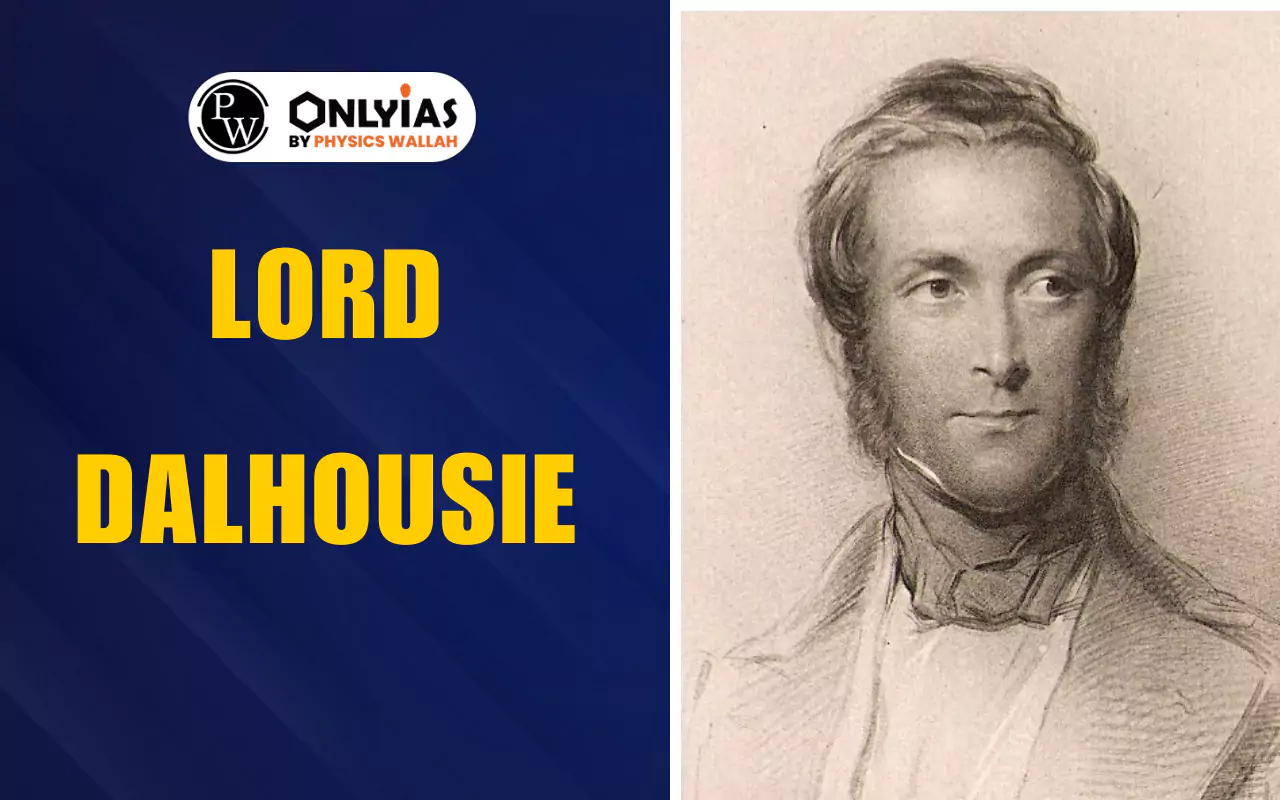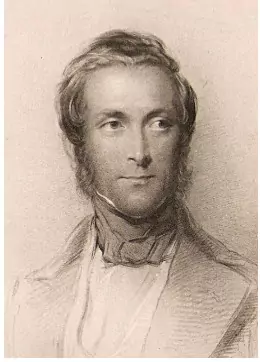Explore the Lord Dalhousie biography, He was a Governor-General of India (1848–1856). Learn about his reforms, Doctrine of Lapse, annexations, infrastructure, education, and social policies that shaped British India and left a lasting impact on governance and modernization.

Lord Dalhousie remains one of the most important figures in the history of British India. He is remembered for his administrative, social, and political reforms. Throughout his tenure, he marked it with a transformative phase in the governance of India under the British Crown.
Lord Dalhousie introduced systems and policies that shaped the nature of colonial administration. Therefore, today, here we are to delve deep into the Lord Dalhousie biography, his reforms, and all the other details.
Lord Dalhousie’s full name was James Andrew Broun-Ramsay, 1st Marquess of Dalhousie. He served as the Governor-General of India from 1848 to 1856. Born on May 22, 1812, in Edinburgh, Scotland, he came from an aristocratic Scottish family and received a formal education in his homeland. His early military background provided him with organizational skills that later helped with governance in India.

Lord Dalhousie’s tenure was characterized by infrastructural expansion, administrative restructuring, and social reforms. All of which reflected his vision of efficient governance. Lord Dalhousie’s biography includes his rise through British military and civil service ranks, culminating in his appointment as Governor-General.
| Full Name | James Andrew Broun Ramsay, marquess and 10th earl of Dalhousie |
| Born | 22 May 1812, Edinburgh, Scotland |
| Governor-General of India | 1848 – 1856 |
| Key Policy | Doctrine of Lapse – annexation of princely states without a direct heir |
| Major Annexations | Satara (1848), Jhansi (1853), Nagpur (1854), Awadh/Oudh (1856) |
| Infrastructure Reforms | Expansion of railways, roads, and telegraph network |
| Social Reforms | Promotion of Western education, support for widow remarriage, public health measures |
| Administrative Reforms | Standardized revenue system, reorganized civil services |
| Legacy | Remembered as one of the most influential Governor-Generals, both for modernization efforts and controversial annexations |
List Of Governor Generals Of India
Lord Dalhousie’s Doctrine of Lapse policy is one of the most talked about in history. According to this doctrine, any princely state without a direct heir would automatically be annexed by the British East India Company. This policy aimed to strengthen British control over India. But it also caused considerable disagreement among Indian rulers.
The Doctrine of Lapse led to the annexation of several states, including Satara (1848), Jhansi (1853), and Nagpur (1854). Under the Doctrine of Lapse expansion of the British Empire became easier. The doctrine contributed to political instability and dissatisfaction. Thereby, ultimately fueling unrest that led to the Indian Rebellion of 1857.
Lord Dalhousie, as a Maker of Modern India, introduced reforms across administrative, social, and infrastructural domains. The following table summarizes these reforms for clarity:
Lord Dalhousie’s administrative reforms were designed to enhance efficiency, centralize control, and reduce corruption. Mentioned here are key aspects of Lord Dalhousie’s Administrative Reforms:
Lord Dalhousie’s Administrative Reforms
Key Aspect
Description
Revenue System Standardisation
Introduction of uniform revenue procedures to ensure consistent tax collection and reduce exploitation by local officials.
Civil Service Reorganisation
Implementation of merit-based recruitment and structured administrative hierarchies to improve governance.
Infrastructure Administration
Establishment of offices to manage railways, roads, and telegraph networks, integrating infrastructure with administrative oversight.
In addition to administrative and infrastructural changes. Lord Dalhousie focused on social reforms aimed at modernization and public welfare. Provided here is the table that covers the social reforms made by Lord Dalhousie:
| Social Reforms By Lord Dalhousie | |
| Reform Area | Description |
| Educational Initiatives | Promotion of Western-style education through the establishment of schools, colleges, and universities to improve literacy and administrative competence.
Woods Despatch (Woods Despatch (1854) made the foundation of modern education in India by promoting English-medium instruction, teacher training, universities, and government responsibility for educational development across the country.) |
| Public Health Measures | Introduction of sanitation policies and urban infrastructure improvements to prevent disease and enhance well-being. |
| Social Modernization | Encouragement of social reforms such as widow remarriage and public awareness campaigns, within the limits of contemporary societal norms. |
|
|
Lord Dalhousie’s territorial and political reforms were aimed at consolidating British authority, managing princely states, and ensuring stable governance. These reforms played a crucial role in expanding and maintaining British control over India.
| Territorial & Political Reforms By Lord Dalhousie | |
| Reform Area | Description |
| Doctrine of Lapse | Policy allowing the British to annex princely states without a direct heir, consolidating territorial control. Significant states annexed included Satara, Jhansi, and Nagpur. |
| Oudh/ Awadh Annexation | Integration of Oudh in 1856 due to alleged misgovernance by the local ruler, strengthening administrative and political control in northern India. |
Infrastructure development was a key focus of Lord Dalhousie’s governance. His reforms in transport and communication were intended to improve trade, military mobility, and administrative efficiency across India.
| Infrastructure Reforms By Lord Dalhousie | |
| Reform Area | Description |
| Railways & Roads | Construction and expansion of railways and roads to facilitate trade, movement of troops, and administrative coordination. |
| Telegraph System | Expansion of the telegraph network to ensure instant communication between major administrative centers and improve governance efficiency. |
| Postal reform | Lord Dalhousie introduced uniform postage rates, reorganized postal services, and established a centralized postal system. The reforms made postal services affordable, faster, and accessible across India, improving communication and administrative efficiency. |
Ready to boost your UPSC 2026 preparation? Join PW’s UPSC online courses today!
The Doctrine of Lapse was a policy that allowed the British to annex princely states. Without a direct heir, consolidating territorial control.
His full name was James Andrew Broun-Ramsay. He was 1st Marquess of Dalhousie.
Lord Dalhousie passed away on December 19, 1860, in Scotland. Due to health complications after his return from India.
He was born on May 22, 1812, and died on December 19, 1860.
Oudh was annexed in 1856. Due to alleged misgovernance and the failure of the local ruler to maintain British interests in the region.
Lord Dalhousie is known for his infrastructure development. In addition to the Doctrine of Lapse, administrative reforms, and modernization of education and governance in India.
<div class="new-fform">
</div>
